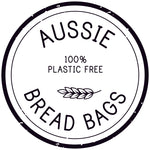How to Wash Reusable Aussie Bread Bags: Gentle Hand Wash Guide
Introduction:
As the demand for eco-friendly alternatives to single-use plastic bags continues to grow, Aussie Bread Bags have become a popular choice for individuals and bakeries alike across Australia and beyond. These reusable bread bags are not only practical and convenient but also help reduce waste and promote sustainable living. To ensure that your Aussie Bread Bags stay fresh, clean, and ready for future use, it is essential to follow proper washing and care techniques. In this comprehensive guide, we will walk you through a detailed step-by-step process for washing your bread bags using a gentle hand wash method.
Step 1: Prepare the Washing Environment
Creating an optimal washing environment is the first step towards effectively cleaning your Aussie Bread Bags. Start by gathering the following materials:
- A basin or sink filled with warm water, which will provide a gentle washing environment.
- A mild and eco-friendly detergent that is suitable for delicate fabrics.
- If needed, a soft-bristle brush to tackle stubborn stains or residue.
Step 2: Empty the Bag and Shake Off Crumbs
Before beginning the washing process, empty the contents of the bread bag and give it a gentle shake to remove any loose crumbs or debris. This step helps prevent these particles from clinging to the fabric during the washing process.
Step 3: Soak the Bag
Submerge the bread bag in the warm water and allow it to soak for a few minutes. Soaking helps to loosen any stuck-on residue, making it easier to remove during the washing stage.
Step 4: Hand Washing
Add a small amount of the mild detergent to the warm water, creating a soapy solution. Gently agitate the water to evenly distribute the detergent. Take the bread bag and carefully hand wash it by gently rubbing the fabric together. Pay extra attention to any stains or soiled areas, using the soft-bristle brush if necessary. However, avoid using excessive force as it may cause damage to the bag's fabric or stitching.
Step 5: Rinse Thoroughly
Once you have finished washing the bread bag, rinse it under cool running water until all the soap residue is completely removed. It is crucial to ensure that no detergent remains in the bag, as it can affect the taste or aroma of your bread.
Step 6: Drying the Bag
To dry your Aussie Bread Bag, gently squeeze out any excess water without wringing or twisting the fabric. Lay the bag flat on a clean, dry towel or hang it in a well-ventilated area. It is important to allow the bag to air dry completely before storing or using it again. Avoid placing the bag in direct sunlight, as this can cause the fabric to fade over time.
Additional Tips for Care and Maintenance:
- Avoid using bleach or harsh chemicals, as they may deteriorate the fabric or affect its organic properties.
- As your bread bag has a drawstring, remember to untie it before washing to prevent tangling or damage.
- For stubborn stains, gently scrub the affected area with a soft-bristle brush or sponge.
- Regularly inspect your bread bag for any signs of wear and tear. If you notice any damage, consider repairing or replacing it to ensure its continued effectiveness.
Conclusion:
By following these detailed steps and tips for washing your reusable Aussie Bread Bags, you can maintain their cleanliness and extend their lifespan. Proper care and maintenance not only help preserve the freshness and quality of your bread bags but also contribute to a sustainable and eco-friendly lifestyle. Embrace the reusable revolution and enjoy the benefits of using Aussie Bread Bags, knowing that you are making a positive impact by reducing plastic waste and supporting a greener future. Reusable, eco-friendly, and sustainable bread bags are an excellent choice for those looking to live a plastic-free, zero-waste, and environmentally friendly lifestyle. Incorporating low-waste practices like using compostable bread bags is a wise way to minimise your ecological footprint and promote a waste-wise society. Join the movement and make a difference today!
